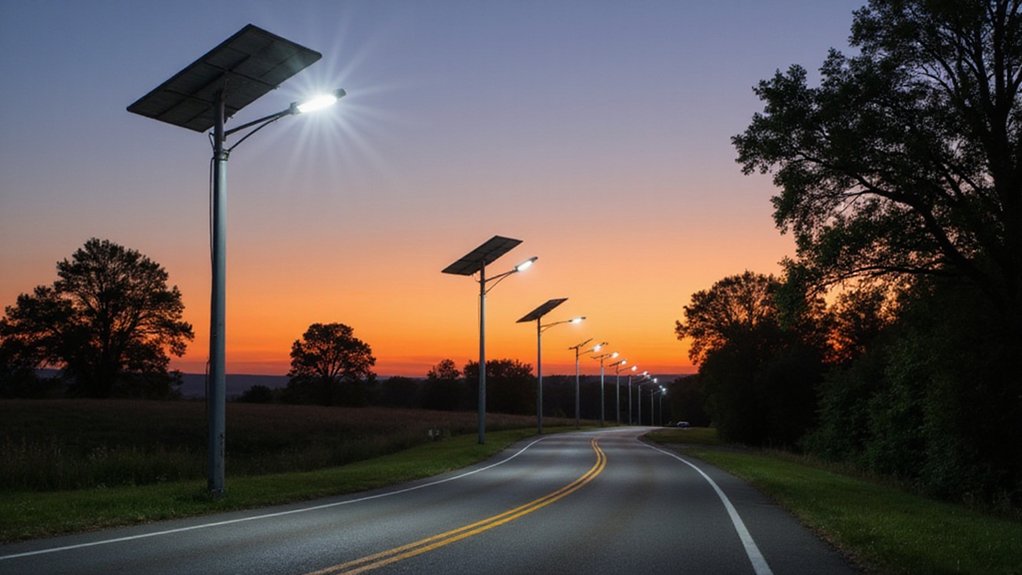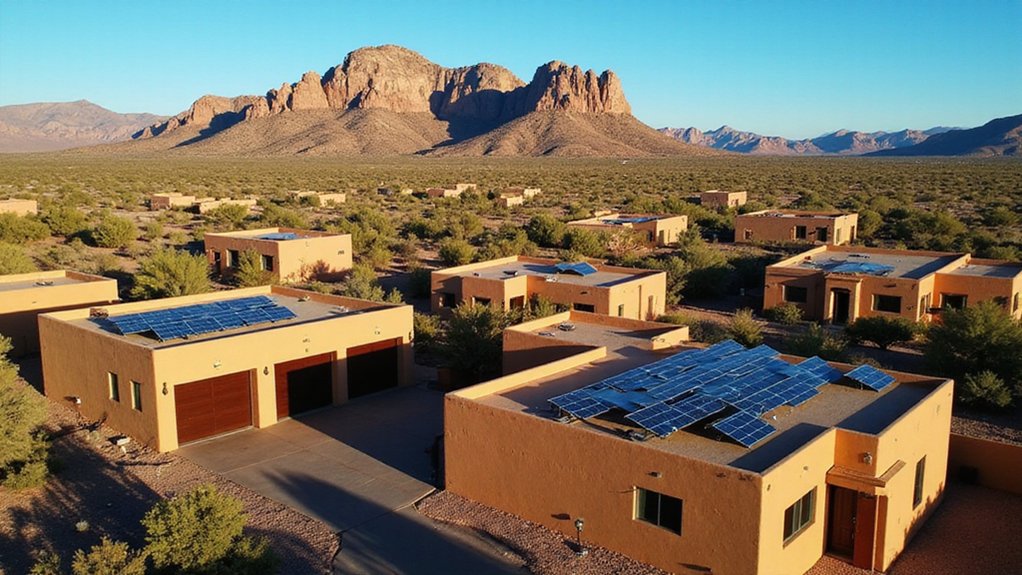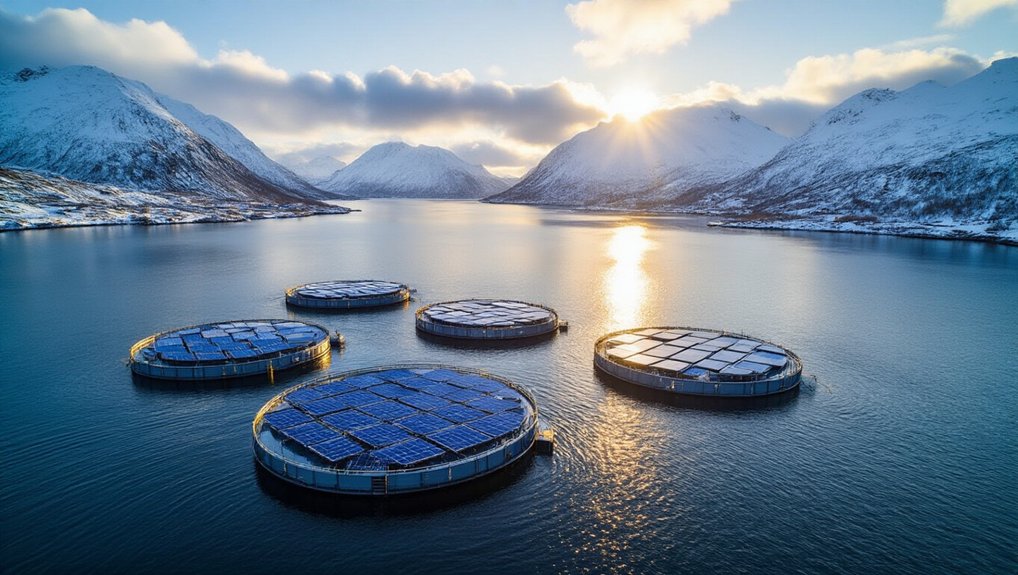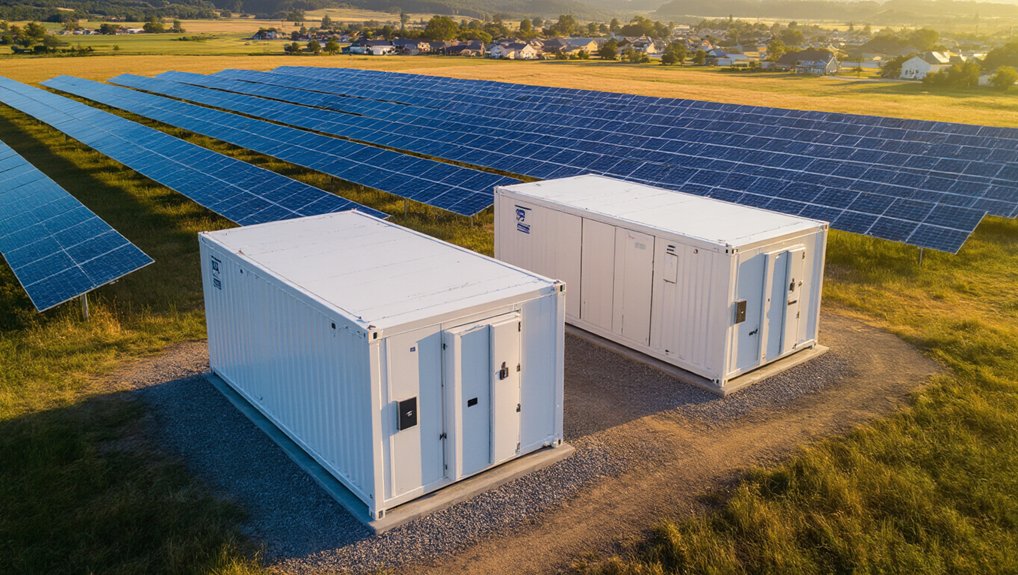Three key components power the modern marvel of off-grid solar streetlights: panels, batteries, and LEDs. The panels, perched atop poles at heights of 5-8 meters, convert sunlight with about 17% efficiency. Not great, but good enough. These photovoltaic warriors charge lithium batteries during daylight hours—typically taking 6-8 hours in direct sun. Then the magic happens after sunset.
The system isn’t rocket science. When light fades, sensors detect darkness and flip the switch. LEDs kick on automatically. These aren’t your grandma’s light bulbs; they deliver at least 100 lumens per watt. Bright stuff. The batteries, usually LiFePO4 with capacities between 0.5 and 5kWh, power these lights for 10-12 hours nightly. And they’re not one-night wonders—most systems can run for three consecutive nights without recharging. Good luck finding that kind of reliability in your phone battery.
Modern solar streetlights outshine your expectations—and your smartphone—with three-night autonomy that makes grid power look primitive.
Installation is ridiculously simple. No trenching, no wiring, no connection to the grid. Just plop these bad boys down 15-25 meters apart. Available in multiple wattage options from 8W to 60W, there’s a solution for every lighting need. They work in scorching heat (+70°C) and numbing cold (-20°C). Try doing that with your fancy laptop.
The council’s decision wasn’t just about going green. It’s about cutting costs. Zero operational electricity expenses after installation. Zero. Maintenance is minimal—replace the batteries every 5-6 years and you’re set. The sleek aluminum alloy housing handles whatever Mother Nature throws at it.
Some models get fancy with motion detection. Why waste energy lighting empty streets? Smart. Professional installation should include surge protection devices to prevent damage from electrical surges during storms. The LEDs themselves offer crisp illumination with color temperatures between 5000-6000°K and a CRI of at least 60. Not cinema-quality lighting, but you’ll see that pothole before you step in it. These streetlights represent a perfect example of renewable energy sources that naturally replenish themselves and produce virtually no greenhouse gases during operation.
For remote areas especially, these solar-powered sentinels make perfect sense. No grid connection needed. Just sunshine and a pole. The council finally did something right. Mark your calendars.
References
- https://www.aepc.gov.np/doc/technical-standard-for-solar-street-light-system2072
- https://www.solarlightsmanufacturer.com/wp-content/uploads/2017/03/SMLN-100W.pdf
- https://commercialledlights.com/outdoor-lighting/street-roadway-lights/solar-street-lights/
- https://digitalcommons.calpoly.edu/cgi/viewcontent.cgi?article=1205&context=eesp
- https://www.buildings.com/architecture/article/55253895/best-practices-for-solar-street-lighting-systems









